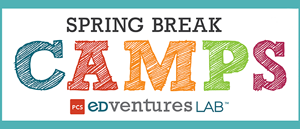Robotics in Education
 While having robots in the classroom may have seemed a bit farfetched in the past, including them in the curriculum is what that teachers and afterschool activity coordinators now are doing to ensure student participation and understanding of STEM concepts. The immediate response is that robotics keeps students engaged; however, some of the most important, most beneficial aspects of robotics are that they can increase student involvement, attitudes, and perceptions of learning.
While having robots in the classroom may have seemed a bit farfetched in the past, including them in the curriculum is what that teachers and afterschool activity coordinators now are doing to ensure student participation and understanding of STEM concepts. The immediate response is that robotics keeps students engaged; however, some of the most important, most beneficial aspects of robotics are that they can increase student involvement, attitudes, and perceptions of learning.
Investigating the impact of robotics on STEM learning and attitudes, Gwen Nugent and colleagues (Nugent, Baker, Grandgenett, & Adamchuk, 2010) tested a group of middle school students who participated in a 40-hour intensive robotics camp. Another group they investigated attended a three-hour, short-term intervention class. In their findings, they were able to draw the conclusion that both groups of students who had been exposed to robotics camp had an increased overall positive attitude towards STEM learning. While both groups experienced a change in attitude, the students who had attended camp also showed pronounced improvement through performance in STEM areas. To reify this assertion, they administered a content test following the camp, which covered topics in computer programming, mathematics, geospatial technology, and engineering (Nugent et al., 2010). Despite the results showing that prolonged exposure to robotics was most beneficial, there is still much merit to be found in having students participate in short term experiences that allow them to interact with robotics.
Similarly, Marina Bers, from Tufts University, along with other educators (Bers, Ponte, Juelich, Viera, & Schenker, 2002), sought to discover the outcomes of integrating robotics in early childhood education. Taking a constructivist approach (which “asserts that people learn better when they are engage in designing and building their own personally meaningful artifacts and sharing them with others in the community”), they employed ongoing intellectual trajectory research which shows that students, particularly younger ones, respond better to tasks when they are presented with the opportunity to create (Bers et al., 2002). In studying different robotics activities for teachers to use in the classroom, Bers and her colleagues discovered that, when teachers made use of a programming language (Lego ROLOLAB), students were able to understand STEM concepts more easily, and were even able to improve their life science skills through mimicking the metamorphosis of a butterfly.
Recently, a veteran EdventuresLab student, was interviewed on her experience in creating her own robotic arm! The full interview was be found here. In taking robotics to the “next level”, PCS will be newly releasing an advanced Discover Robotics and Programming curriculum this spring. This content will be sure to be engaging and will foster new discussion while presenting tremendous promise for teachers and students who want to pursue an alternative route to learning about STEM concepts.
References
Bers, M.U., Ponte, I., Juelich, C., Viera, A. & Schenker, J. (2002). Teachers as Designers: Integrating Robotics in Early Childhood Education. Information Technology in Childhood Education Annual, 2002(1), 123-145. Association for the Advancement of Computing in Education (AACE).
Nugent, Gwen; Barker, Bradley S.; Grandgenett, Neal; and Adamchuk, Viacheslav I., “Impact of Robotics and Geospatial Technology Interventions on Youth STEM Learning and Attitudes” (2010). Teacher Education Faculty Publications. Paper 33.











